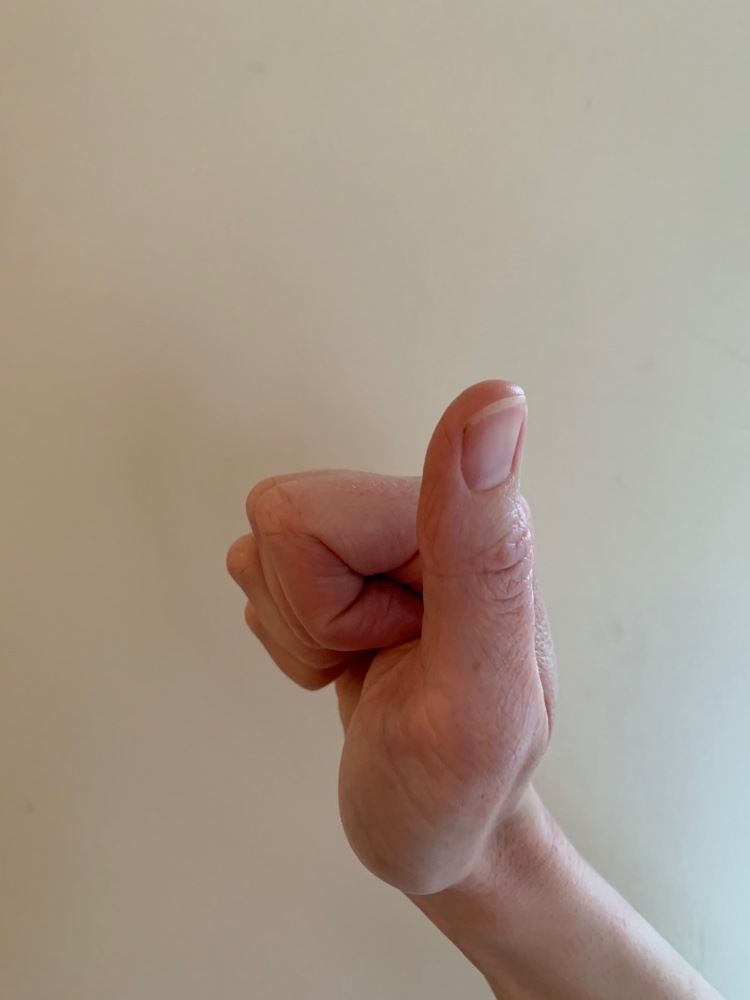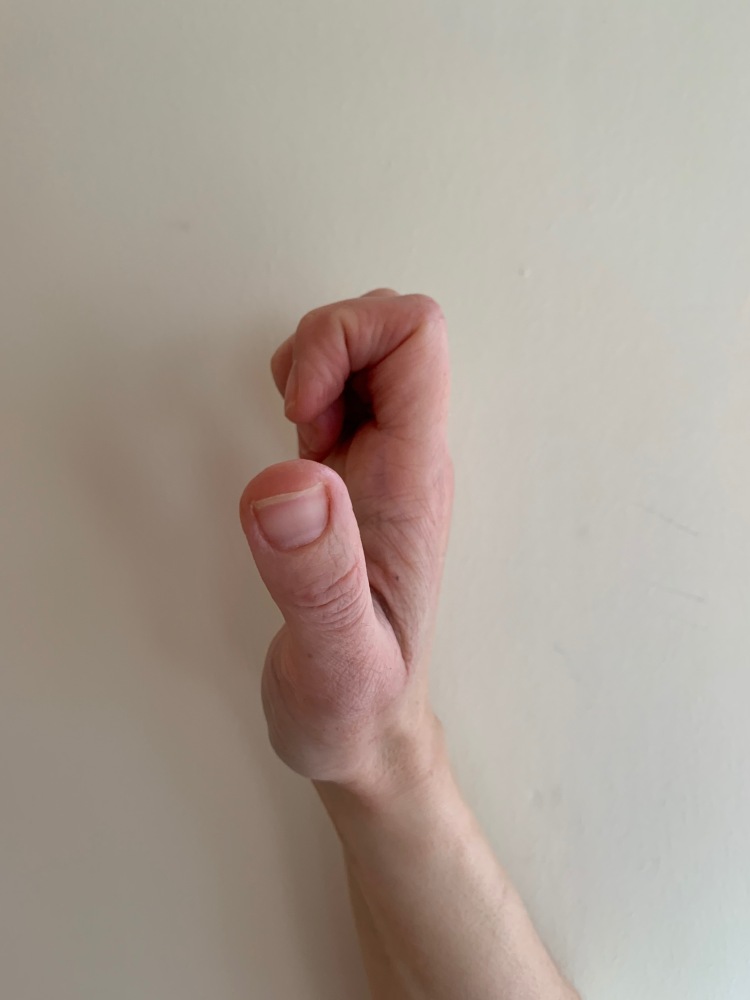Which bones are the phalanges?
The phalanges are the bones of the fingers and thumb beyond the palm. There are three phalanges in each finger, and two in the thumb. These bones articulate at the knuckle joints, where they are stabilised by two collateral ligaments and a strong sheet of tissue on the palm side of the joint called the volar plate.

How do the phalanges break?
Finger tend to break if they are caught and twisted somehow – for example, holding the lead of a dog who turns and twists the hand. They also break if someone stamps on the hand during sport, or when the fingers are bend backwards forcibly.
How is the diagnosis made?
The fracture is diagnosed clinically. There is swelling and tenderness at the fracture site, and there is sometimes deformity of the finger – the finger may stick out at an awkward angle, or the finger may cross over the finger next to it when the hand is pulled into a fist. An X-ray will confirm the diagnosis.
What is the treatment?
The majority of phalangeal fractures are stable. This means that despite the break in the bone, the bone moves as one unit. An unstable phalangeal fracture is one where the bone ends do not move as one unit, or have a significant associated deformity.
STABLE injuries will heal quickly and do not need to be treated. Pain can be a problem to begin with, but this pain should be bearable. The finger can be splinted to the finger next door (buddy taping) and this can help with the pain, but is not necessary for the treatment of the fracture.
In an UNSTABLE injury, such as a finger with significant deformity, there are a number of options:
Splint / plaster – If the bone can be re-aligned with a simple manipulation, then a splint or plaster for the first week or 2 can provide the finger with the stability it needs to heal in a good position.
Surgery – Surgery may be recommended again where the injury is unlikely to stay in position with a simple splint or plaster. There are a number of different techniques used by surgeons including putting wires into the bone or using small bone plates and screws.
How long will the injury take to heal?
Many factors influence the outcome of fracture healing, but the vast majority of fractures heal without complication and most fractures will heal within 4-6 weeks. Smoking have been proven to delay healing, and it is worth considering giving up(!). Vitamins C and D are important in bone healing, so a healthy diet helps too.
Are there any complications of this injury?
Stiffness – stiffness of the small joints in a finger is an extremely common complication of finger fractures, and this is why we recommend movement as early as it is safe to do so. If your finger remains stiff 4 weeks after a fracture, then we recommend that you contact us to arrange a physiotherapy assessment. Stiffness does not usually mean that something has gone wrong – it is a consequence of the injury, and sometimes a degree of stiffness has to be accepted.
Deformity – Although we recommend treatment based on minimising the deformity of the finger, sometimes a degree of deformity has to be accepted – this can make the finger look a little squint, or can cause the fingers to cross each other when making a fist. Once the finger has healed and movement returned, is it usually possible to address residual deformity with surgery.
Rehabilitation following a phalangeal fracture
As a general principle, the earlier the hand moves after injury, the better the outcome – injured fingers that are held still for prolonged periods become very stiff, and this can be a difficult situation to retrieve.
For all STABLE injuries, it is safe to move the hand straight away, and the earlier the better.
In UNSTABLE injuries, where the bones have been stabilised using a splint or with surgery, it is usually safe to move the hand straight away, but there may be restrictions on this movement. Finger dressings limit movement, and after surgery, these can be used specifically to prevent movement of the digit. In the case where a splint or bandage is limiting movement, it is safe and necessary to keep the rest of the hand moving where possible. Most splints or bandages are on for only 2-3 weeks at most, and the finger or hand can be safely moved when these are removed. Exercises as shown below can be performed as guided by the hand therapy team.







© Fife Hand Service 2023